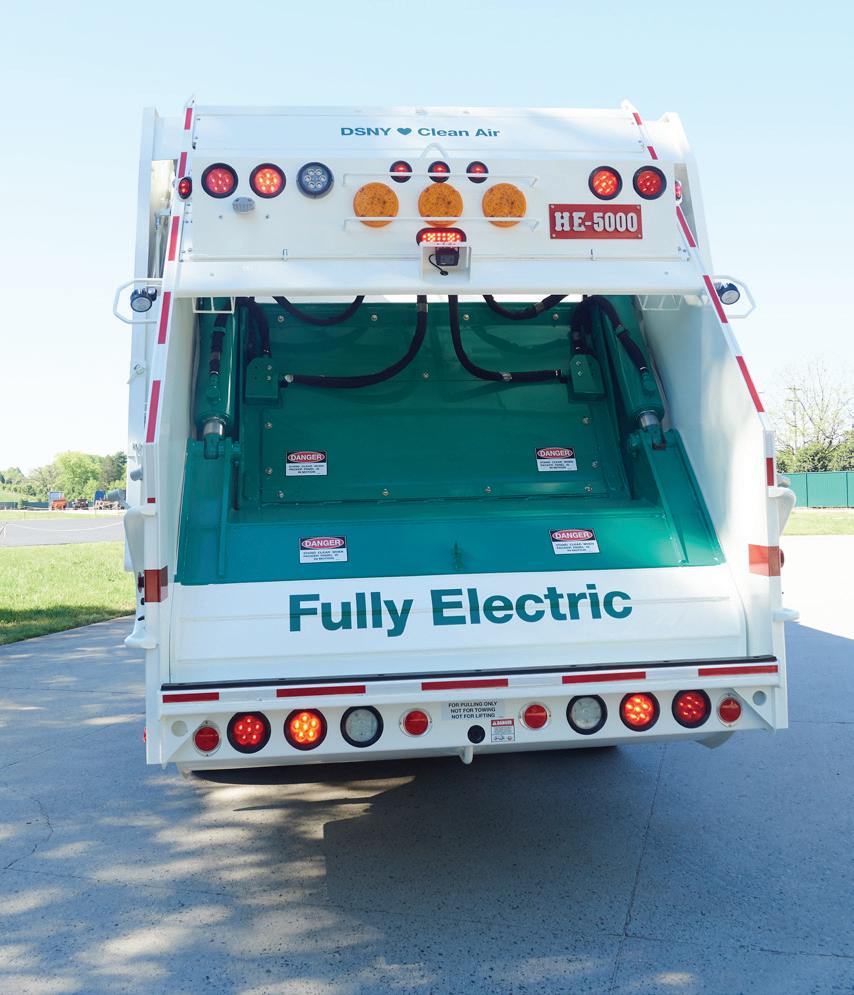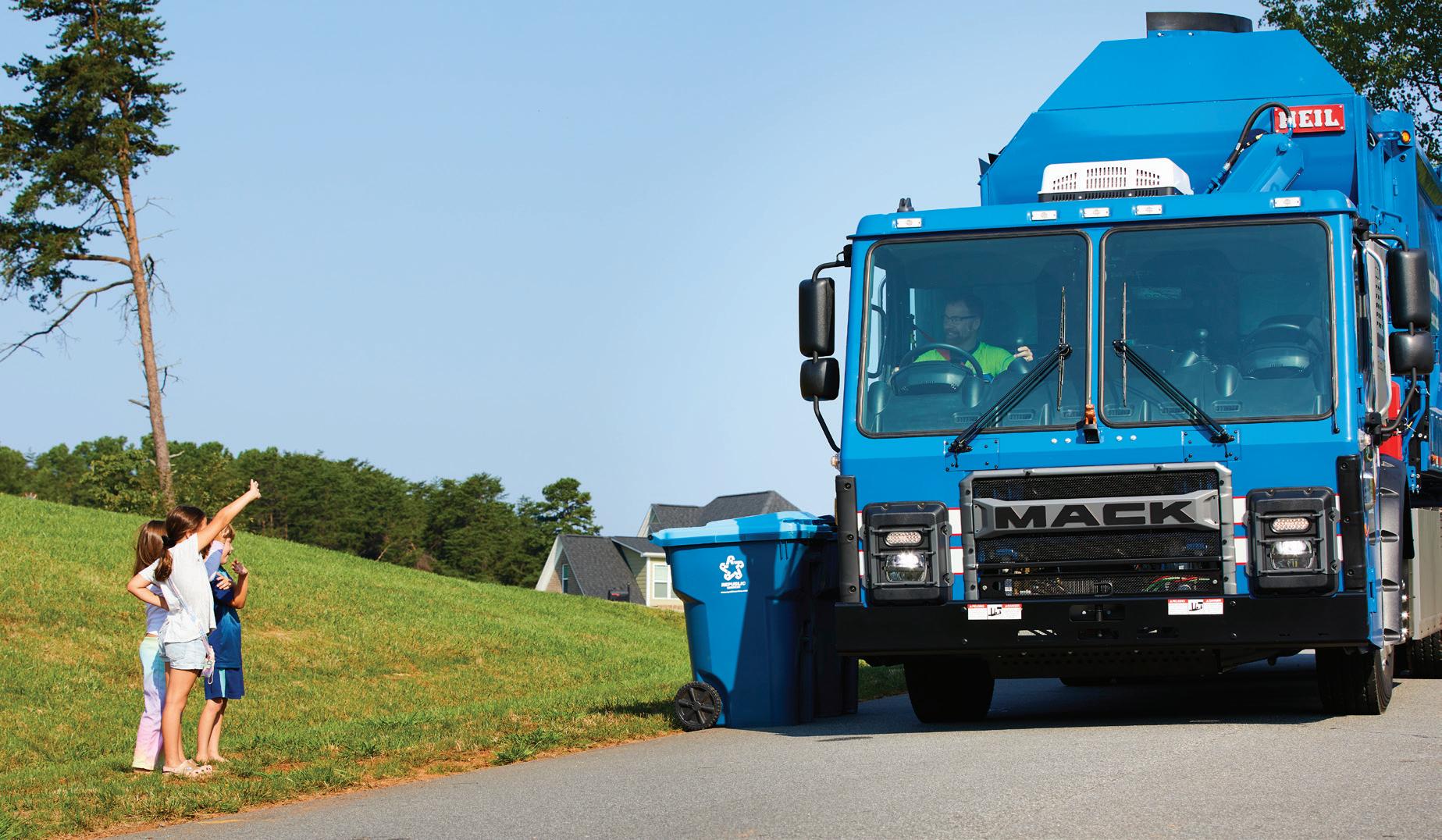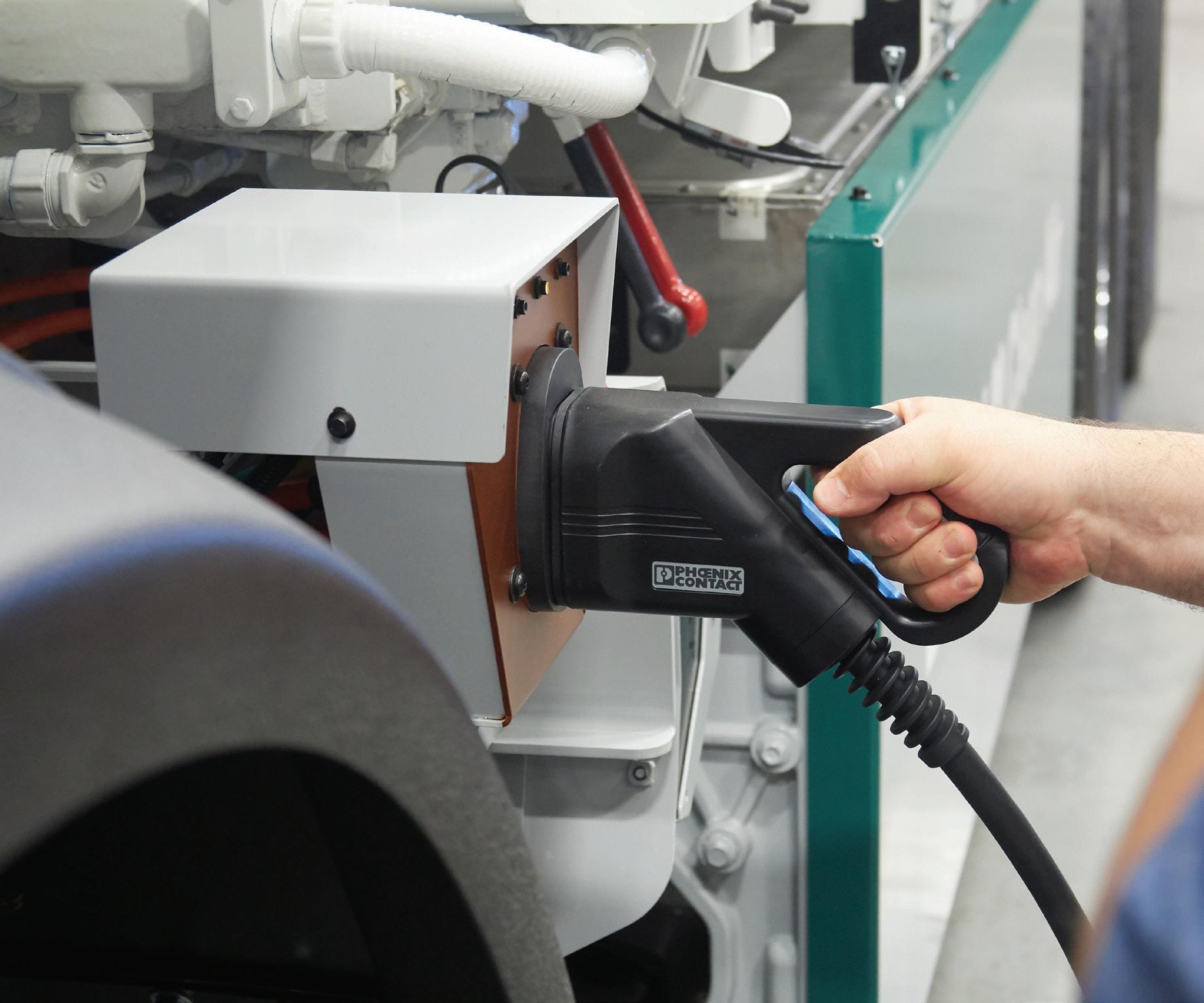
4 minute read
On Equipment
LR Electric: helping build a cleaner, better future
By Aaron Marsh
When it comes to the electromobility era in trucking and transportation, Mack Trucks is setting its sights high. With a purpose of moving and building a better world, Mack is now taking orders for the timely LR Electric battery electric refuse truck, which will be built at the company’s Lehigh Valley Operations facility in Macungie, Pennsylvania.
To signify the new era of the LR Electric, the familiar Bulldog hood ornament is now copper colored. The refuse segment is a natural fit for launching the new truck for several reasons. Mack is the leader in the segment with the diesel-powered LR and can wield that influence and experience, but there’s more.
“We are working to build transportation solutions that are 100% fossil-fuel free, 100% safe and 100% more productive,” says George Fotopoulos, vice president, eMobility Business Unit leader at Mack.
“We need to not only meet the transportation needs of our customers but also take care of the world that we live in,” he adds.
The characteristics of the refuse segment also lend themselves very well to an electric truck, he explains. Refuse trucks usually run closed-loop operations on the same routes every day. The vehicles also come home to their hubs every night, which makes for an excellent place for the vehicles to charge.
“There’s also a lot of start-and-stop within a waste collection service,” Fotopoulos points out, “and that allows us to harvest energy through regenerative braking that we have onboard. The LR Electric is a vehicle that fits into the refuse sector very nicely.”
The refuse industry also tends to be notably environmentally conscious, and that’s an important consideration for these customers, says Scott Barraclough, Mack’s senior product manager, eMobility. The LR Electric can meet their business needs while helping reduce their carbon footprint, and it’s a very visible sign of those efforts.
Pre-production Mack LR Electric trucks have been in field tests since last fall by Republic Services in Hickory, North Carolina, and at the New York City Department of Sanitation. The former includes longer, more suburban waste-collection routes, while the latter involves some shorter, tighter city routes with frequent stops.
Driver experience

The pre-production units, which are largely identical to the trucks that will roll off production lines, have performed well and generated significant positive feedback. The experiences with the pre-production LR Electrics will help refine the production models. One thing that has stood out with the electric trucks is an improved driver experience, mainly because of less engine noise and vibration.
“The drivers have less fatigue, and it’s just been an improved overall experience for the driver,” Fotopoulos says. “And of course, for the external world, there’s less noise pollution and zero emissions.”
Lower cost of operation
Along with the lack of emissions, there’s a lower total running cost and longer service internals — meaning greater uptime — with these electric trucks compared with a diesel equivalent model, he notes. But the other thing that’s come out in field testing is how to plan a route with an electric vehicle. The LR Electric, due to its fast-charge capability, provides for some flexibility in that regard.
Charging times will vary according to charge power, says Barraclough. “At its fastest, we can charge up to a 150kW rate. At that rate, we can completely recharge a truck in around 90 minutes,” Barraclough says. “If you need a midday recharge, with a fast charger, that becomes a possibility,” he adds. “You may not need a full recharge to complete your route — for example, you hook up for 30 minutes, that could provide enough charge to finish the day. That becomes practical at the high charging rate.”
The LR Electric will be available for traditional purchase, but Mack is also offering the truck through a subscription-type “vehicle-as-a-service” option. “You would pay for a term, and at the end of the term you could choose to buy, discontinue or renew that term for another period,” Fotopoulos says.
A key consideration for LR Electric customers is the charging infrastructure, and Mack can help with that as well, either providing for charging needs through its partner or referring clients for additional charging solutions. Mack will also provide a service offering tailored to the needs of electric vehicles and their fleets.
Fotopoulos notes potential customers can check their states and localities for grants and incentives that may be available to support the purchase of LR Electrics and/or charging infrastructure. “There are a number of different options that we at Mack are more than happy to help guide customers on to regarding those funding sources in individual states and provinces, and we’ll be keeping an eye on whether any federal funding becomes available as well.”
The LR Electric is an idea whose time has come. “This is the start of the electric era for commercial vehicles,” Fotopoulos says. “Battery technology is at a point where it’s applicable to the use cases in our industry. We are moving toward and building a better world, and we need to do this not only with the current product portfolio we have today, but as part of the e-mobility transformation we are beginning right now.”
“At Mack, we are doing more than putting our pens to paper as we build our plans for the future,” he says.


Fast specs: Mack LR Electric
2AC motors with 448 hp continuous power and 4,051 lbs.-ft. of torque, available from 0 rpm
2-speed Mack Powershift transmission 4 Lithium NMC batteries, 600V, with fast-charging capability 66,000 lbs. GVWR Axles: Mack FXL20 20,000-lb. front axle, Mack S462R 46,000-lb. rear axles Brakes: three-mode regenerative Charging: up to 150kW charge power with a max current of 200A, 550-750 volts
Service supported through Mack dealership network



